Spotlight @ Sussex Impact Day: A celebration of Sussex postdoctoral research
Building on the successful Spotlight Profiles of Sussex Research Fellows, on Tuesday 13th June 2017, the Research Staff Office hosted a Spotlight session as part of the annual Sussex Impact Day. The aim of the session was to celebrate the research achievements and impact of Sussex Research Fellows through a series of short engaging TED-style talks from postdoctoral researchers from across the University.

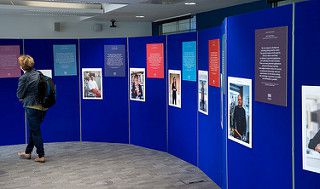
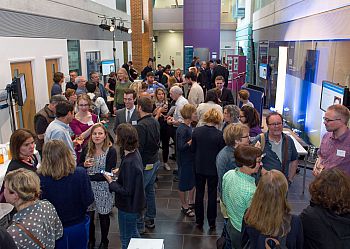
Spotlight Speakers
Our line up of speakers for Spotlight @ Sussex Impact Day was as follows:
Click on the names below to read the full talk abstracts.
- Dr Adam Barrett - Measuring Consciousness
-
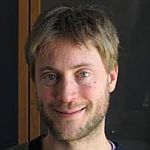
Understanding the biological basis of consciousness is sometimes considered the final frontier of science. We are now finally seeing some progress on this frontier: a theory for describing mathematically the key differences between conscious and unconscious brain activity, that can be tested on brain data. Strikingly, when we’re conscious there are a greater number of distinct patterns present in our brain waves. This reflects how complicated each moment of our experience is, and that each experience is one of an absolutely vast number of possible experiences that we could have. Drawing from my mathematical background in theoretical physics, I have been refining the theory and its real-world applications. We have been developing and applying new methods for counting the number of different patterns in a brain recording. The results are encouraging: brain activity when asleep or under anaesthesia is indeed less diverse, in terms of number of distinct patterns, than brain activity when awake. Intriguingly, we have even found that there is greater diversity than normal in the brain waves of someone given a psychedelic substance such as LSD.
- Dr Stefano Caserta - Discovery of Novel Biomarkers for Sepsis
-
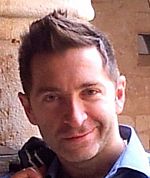 A major bottleneck of sepsis diagnosis is the capacity to quickly discriminate this potentially life-threatening condition from other critical illnesses, in particular Systemic Inflammatory Response Syndrome (SIRS). Sepsis (also known as blood poisoning) is a systemic inflammatory response of our body which starts after an infection by invading germs. With a striking mortality rate of 37%, sepsis kills more people than the top 3 cancers together, claiming around 39,000 lives every year in the UK alone. Antibiotics are the only cautionary treatment for sepsis in patients with a confirmed diagnosis. Sepsis burden is increasing worldwide aggravated by germ resistance to antibiotics and ageing populations. The economic cost of sepsis to the NHS is estimated at ~£2.5bn/year.
A major bottleneck of sepsis diagnosis is the capacity to quickly discriminate this potentially life-threatening condition from other critical illnesses, in particular Systemic Inflammatory Response Syndrome (SIRS). Sepsis (also known as blood poisoning) is a systemic inflammatory response of our body which starts after an infection by invading germs. With a striking mortality rate of 37%, sepsis kills more people than the top 3 cancers together, claiming around 39,000 lives every year in the UK alone. Antibiotics are the only cautionary treatment for sepsis in patients with a confirmed diagnosis. Sepsis burden is increasing worldwide aggravated by germ resistance to antibiotics and ageing populations. The economic cost of sepsis to the NHS is estimated at ~£2.5bn/year.We developed a novel blood test that has the potential to save lives by enabling quick and accurate diagnoses of sepsis, as published in Scientific Reports. Current tests for diagnosing sepsis are not efficient in discriminating it from SIRS and can take up to three days, during which time the patient’s health may rapidly decline. Our test works by identifying the presence of specific target micro-RNAs (small compounds that may be released by our body cells into the blood) that can determine whether the patient is septic. Crucially, these target micro-RNAs are also part of the body response during sepsis, hence why they are more accurate than current diagnostic biomarkers. Our discovery will enable the correct treatments to be administered to septic patients, greatly reducing the risk of death or prescription of unnecessary antibiotics.
- Dr Priya Deshingkar - Demonised migration brokers offer useful lessons for reducing migration risks
-
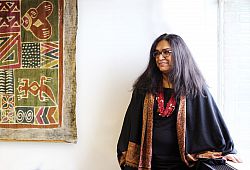 A top priority for governments and human rights organisations aiming to end trafficking, forced labour and modern slavery in migration is to “break the business model” of brokers who are believed to be the main channel through which exploitation occurs. An estimated 45.8 million people are enslaved in the world today generating an estimated $150.2 billion a year in profits.
A top priority for governments and human rights organisations aiming to end trafficking, forced labour and modern slavery in migration is to “break the business model” of brokers who are believed to be the main channel through which exploitation occurs. An estimated 45.8 million people are enslaved in the world today generating an estimated $150.2 billion a year in profits. Both domestic work and construction work have attracted global attention as occupations where forced labour and slavery are widespread due to a lack of written contracts, the hidden nature of the work (in the case of domestic workers), non-compliance with labour laws and the prevalence of brokers. Migrant workers from poorer countries and marginalised communities are heavily represented in both occupations. Often, the only way they can negotiate complex immigration and work permit regulations is with the help of brokers who possess the skills, and connections needed to traverse these different worlds. However there is another side to this process which sheds light on why migrants keep using brokers.
Recent research that I have been involved with in Ghana and Bangladesh shows a more complex reality where brokers are both complicit in perpetuating exploitation and conditions of forced labour but also supportive in helping migrants with their own agendas for bargaining for better working conditions and self-development. I will argue that simply attacking brokers’ business models without understanding migrants needs and easing migration controls will be ineffective and push migrants into in more irregular, expensive and dangerous migration routes.
- Dr Helena Harder - From Patients to Apps: developing bWell - a breast cancer app
-
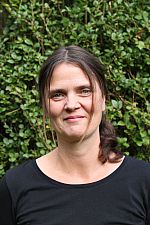 mHealth applications have great potential to provide information specific to patients’ needs. The aim of our research was to develop an evidence-based mobile app, bWell, supported by user preferences to optimise self-management of arm and shoulder exercises for upper-limb dysfunction (ULD) after breast cancer treatment. Literature was reviewed to develop the exercise intervention and explore health behaviour techniques for bWell. Two focus groups were held to identify user needs and requirements. Concepts for content were identified by thematic analysis. Early user testing was conducted to evaluate the feasibility of using the app after surgery.
mHealth applications have great potential to provide information specific to patients’ needs. The aim of our research was to develop an evidence-based mobile app, bWell, supported by user preferences to optimise self-management of arm and shoulder exercises for upper-limb dysfunction (ULD) after breast cancer treatment. Literature was reviewed to develop the exercise intervention and explore health behaviour techniques for bWell. Two focus groups were held to identify user needs and requirements. Concepts for content were identified by thematic analysis. Early user testing was conducted to evaluate the feasibility of using the app after surgery. Experiences with ULD and exercise advice and routines varied widely. Several features for the app were identified: tailored information, video demonstrations of the exercises (with clear instructions and reassurance), push notifications, and tracking and progress features. An evidence-based exercise program was developed with a physiotherapist, including exercises for passive and active mobilisation, stretching and strengthening. The exercise videos were filmed with a breast cancer survivor and included in the app. Early user testing demonstrated ease of use and clear and motivating content.
A novel mobile app (iOS) bWell, was developed by breast cancer patients, health care professionals and academics. The app is a promising way to support patients with exercise routines after breast cancer treatment. The innovative and easily accessible nature of the app may improve future clinical care. Further research must be carried out to confirm its clinical effectiveness.
- Dr Mari Martiskainen - The Energy Cafe - Community Action on Fuel Poverty
-
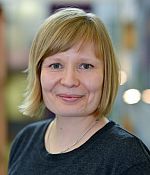 This research presents the concept of Energy Cafés – community initiatives that help people who are struggling to pay, or understand, their energy bills. Energy cafés are open to anyone, but are targeted especially to those who are fuel poor, i.e. who cannot afford to heat their homes or use domestic appliances. Fuel poverty is a persistent problem in the UK.
This research presents the concept of Energy Cafés – community initiatives that help people who are struggling to pay, or understand, their energy bills. Energy cafés are open to anyone, but are targeted especially to those who are fuel poor, i.e. who cannot afford to heat their homes or use domestic appliances. Fuel poverty is a persistent problem in the UK.Living in a cold home can have wide reaching implications on people’s health and wellbeing, and many people die due to fuel poverty related illness. Based on semi-structured interviews with community groups who have run energy cafés, this research outlines key motivations, opportunities and challenges linked to organising an energy café.
Energy cafés have been run by about a dozen community groups in the UK, located in varying places, including town centre shops, community venues and village greens. They are typically staffed by volunteers who provide advice about energy bills and energy efficiency measures. Community groups use a range of publicity and marketing tools to attract clients. Our research shows that an efficient use of funds for fuel poverty alleviation could involve energy cafés acting as a service that connects the client to the help that best meets their needs. This could also involve cooperation between community organisations, health service and local authorities to use energy cafés to better identify those who need help.
- Dr Christiane Oedekoven - Remembering events - the influence of memory impairment
-
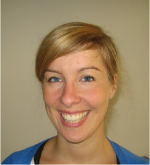 In my research I investigate how memory for events is influenced by memory impairment. This is of particular interest, because a difficulty in remembering recent events is the most common early symptom of Alzheimer’s disease. Currently there are an estimated 850,000 people with dementia living in the UK, and Alzheimer’s disease is the main cause for dementia. As we all are expected to live longer lives, this number is expected to rise. It is therefore of interest to see whether memory for events can be improved in patients with memory impairment.
In my research I investigate how memory for events is influenced by memory impairment. This is of particular interest, because a difficulty in remembering recent events is the most common early symptom of Alzheimer’s disease. Currently there are an estimated 850,000 people with dementia living in the UK, and Alzheimer’s disease is the main cause for dementia. As we all are expected to live longer lives, this number is expected to rise. It is therefore of interest to see whether memory for events can be improved in patients with memory impairment.In clinics, memory is often tested with word lists or recognition of single items, but I am interested in investigating memory for events in a more lifelike context. To create memories for events I ask participants to watch and remember short video clips in the MRI scanner and describe them afterwards. This allows me to investigate the brain networks that underpin memory processing as well as the actual memories they recall. In regard to the memories,
I am interested in how memory impairment affects both memory for the details as well as the gist. In regard to the brain networks, I am interested how participants’ brain networks vary with the degree of memory impairment and how they differ from healthy adults.
Based on this work I plan to investigate strategies for the improvement of memory retrieval that could have direct practical implications for memory rehabilitation. - Dr Katarzyna Pisanski - Science for sale: Predatory journals and editorial misconduct
-
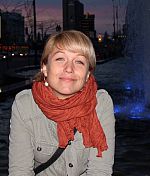 In scientific publishing, like in nature, there are predators and prey. The widely celebrated open-access movement has given rise to thousands of ‘predatory’ journals that exist to extract fees from authors, yet fail to offer rigorous peer review. In a scientific sting operation recently published in Nature, we set out to examine the editorial practices of predatory versus vetted journals.
In scientific publishing, like in nature, there are predators and prey. The widely celebrated open-access movement has given rise to thousands of ‘predatory’ journals that exist to extract fees from authors, yet fail to offer rigorous peer review. In a scientific sting operation recently published in Nature, we set out to examine the editorial practices of predatory versus vetted journals.We created a fictitious scientist named Anna O. Szust (Oszust is the Polish word for ‘a fraud’) whose credentials were dismally inadequate for a role as editor, and applied on her behalf for a position on the editorial boards of 360 scholarly journals. The journals were randomly selected from popular whitelists and blacklists (Journal Citation Reports, Directory of Open Access Journals, and Beall’s list of potential predatory open-access journals).
Our results were alarming. Almost 50 academic journals granted Szust an editorial position, often within hours or days of application. The vast majority were predatory journals, four of which immediately appointed Szust Editor-in-Chief. Perhaps most troubling, many journals only wanted Szust to recruit paid paper submissions from other scientists, rather than assess the quality of manuscripts. The goal of our sting was to bring further awareness to the critical state of predatory publishing. However, in this ‘publish or perish’ era, a solution will require reducing the benefits of publishing in illegitimate journals not only for publishers, but also for authors.
- Dr Elizabeth Rendon-Morales - First minute of life: novel technologies for heart monitoring
-
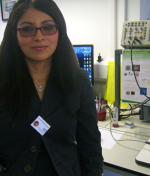 Have you ever thought when was the first time that your heart started pumping blood?
Have you ever thought when was the first time that your heart started pumping blood?It happens during pregnancy around week ten of gestational age, the detection of the heartbeat is the main indicator that the baby is alive. When the heart is first formed, the summation of electrical activity generated in the cardiac muscle of the embryo defines the generation of what we call electrocardiogram.
I am fascinated with the fact that our heart generates electricity by itself. With my research I would like to aid in the understanding of the processes associated with the electricity of the heart when it is first formed. Nevertheless, as I am neither biologist nor cardiologist I will answer this question from the Engineering point of view which is by developing highly-sensitive tools.My research is about the development and testing of novel sensing technologies to gather information related with the development of the heart when it is first formed. This information does not exist, due to the lack of non-invasive technology.
My research has demonstrated that the development of novel devices based on electric field detection could be used to develop future diagnostic equipment. This technology measures the electricity from the body in a non-invasive way, which means we can monitor signals from foetus without affecting its development.I believe that technology should be designed for real people, my dream is to make this technology accessible and to aid the understanding on how the electricity of the heart contributes to the origin-of-life.
Visit the Sussex Impact Day webpage for more information about the day.
Contact Us
E: researchstaffoffice@sussex.ac.uk
T: 01273 877979
Research Staff Office, Research and Enterprise Services, Level 1, Falmer House, University of Sussex, BN1 9QF

